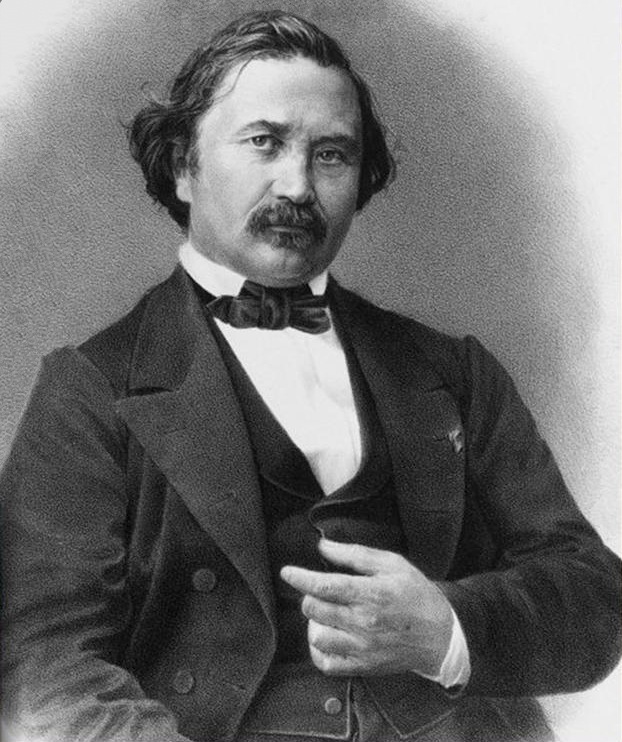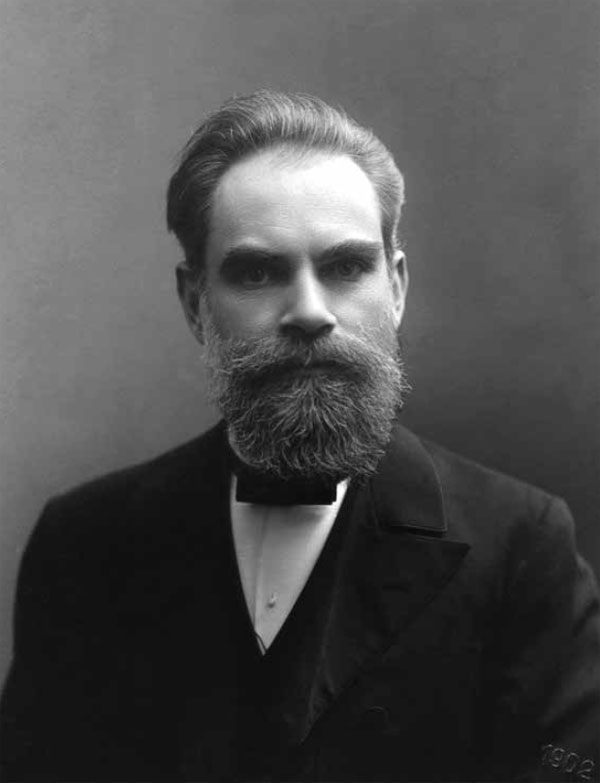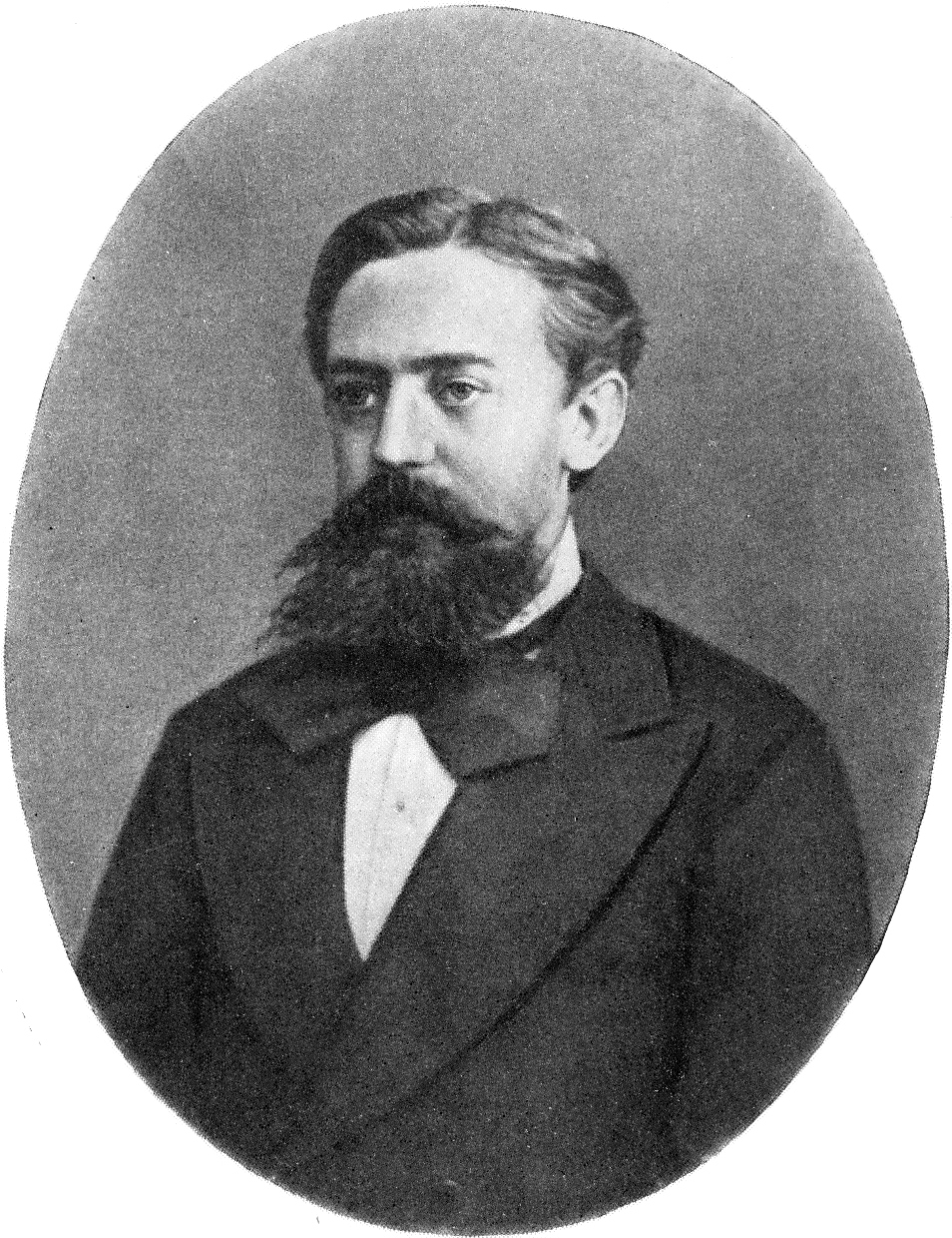|
Chebyshev
Pafnuty Lvovich Chebyshev ( rus, Пафну́тий Льво́вич Чебышёв, p=pɐfˈnutʲɪj ˈlʲvovʲɪtɕ tɕɪbɨˈʂof) ( – ) was a list of Russian mathematicians, Russian mathematician and considered to be the founding father of Russian mathematics. Chebyshev is known for his fundamental contributions to the fields of probability, statistics, mechanics, and number theory. A number of important mathematical concepts are named after him, including the Chebyshev inequality (which can be used to prove the weak law of large numbers), the Bertrand's postulate, Bertrand–Chebyshev theorem, Chebyshev polynomials, Chebyshev linkage, and Chebyshev bias. Transcription The surname Chebyshev has been transliterated in several different ways, like Tchebichef, Tchebychev, Tchebycheff, Tschebyschev, Tschebyschef, Tschebyscheff, Čebyčev, Čebyšev, Chebysheff, Chebychov, Chebyshov (according to native Russian speakers, this one provides the closest pronunciation in Engl ... [...More Info...] [...Related Items...] OR: [Wikipedia] [Google] [Baidu] |
Chebyshev Polynomial
The Chebyshev polynomials are two sequences of orthogonal polynomials related to the trigonometric functions, cosine and sine functions, notated as T_n(x) and U_n(x). They can be defined in several equivalent ways, one of which starts with trigonometric functions: The Chebyshev polynomials of the first kind T_n are defined by T_n(\cos \theta) = \cos(n\theta). Similarly, the Chebyshev polynomials of the second kind U_n are defined by U_n(\cos \theta) \sin \theta = \sin\big((n + 1)\theta\big). That these expressions define polynomials in \cos\theta is not obvious at first sight but can be shown using de Moivre's formula (see #Trigonometric definition, below). The Chebyshev polynomials are polynomials with the largest possible leading coefficient whose absolute value on the interval (mathematics), interval is bounded by 1. They are also the "extremal" polynomials for many other properties. In 1952, Cornelius Lanczos showed that the Chebyshev polynomials are important in a ... [...More Info...] [...Related Items...] OR: [Wikipedia] [Google] [Baidu] |
Chebyshev Inequality
In probability theory, Chebyshev's inequality (also called the Bienaymé–Chebyshev inequality) provides an upper bound on the probability of deviation of a random variable (with finite variance) from its mean. More specifically, the probability that a random variable deviates from its mean by more than k\sigma is at most 1/k^2, where k is any positive constant and \sigma is the standard deviation (the square root of the variance). The rule is often called Chebyshev's theorem, about the range of standard deviations around the mean, in statistics. The inequality has great utility because it can be applied to any probability distribution in which the mean and variance are defined. For example, it can be used to prove the weak law of large numbers. Its practical usage is similar to the 68–95–99.7 rule, which applies only to normal distributions. Chebyshev's inequality is more general, stating that a minimum of just 75% of values must lie within two standard deviations of the ... [...More Info...] [...Related Items...] OR: [Wikipedia] [Google] [Baidu] |
Bertrand's Postulate
In number theory, Bertrand's postulate is the theorem that for any integer n > 3, there exists at least one prime number p with :n < p < 2n - 2. A less restrictive formulation is: for every , there is always at least one prime such that : Another formulation, where is the -th prime, is: for : This statement was first conjectured in 1845 by Joseph Bertrand (1822–1900). Bertrand himself verified his statement for all integers . His conjecture was completely Proof of Bertrand's postulate, proved by Pafnuty Chebyshev, Chebyshev (1821–1894) in 1852 and so the postulate is also called the Bertrand–Chebyshev theorem or Chebyshev's theorem. Chebyshev's theorem can also be stated as a relationship with , the prime-counting function (number of primes less than or equal to ): ... [...More Info...] [...Related Items...] OR: [Wikipedia] [Google] [Baidu] |
Chebyshev Linkage
In kinematics, Chebyshev's linkage is a four-bar linkage that converts rotational motion to approximate linear motion. It was invented by the 19th-century mathematician Pafnuty Chebyshev, who studied theoretical problems in kinematic Mechanism (engineering), mechanisms. One of the problems was the construction of a linkage that converts a rotary motion into an approximate straight-line motion (a straight line mechanism). This was also studied by James Watt in his improvements to the steam engine, which resulted in Watt's linkage. – Cross link straight-line mechanism Equations of motion The motion of the linkage can be constrained to an input angle that may be changed through velocities, forces, etc. The input angles can be either link ''L''2 with the horizontal or link ''L ...[...More Info...] [...Related Items...] OR: [Wikipedia] [Google] [Baidu] |
Aleksandr Lyapunov
Aleksandr Mikhailovich Lyapunov (Алекса́ндр Миха́йлович Ляпуно́в, – 3 November 1918) was a Russian mathematician, mechanician and physicist. He was the son of the astronomer Mikhail Lyapunov and the brother of the pianist and composer Sergei Lyapunov. Lyapunov is known for his development of the stability theory of a dynamical system, as well as for his many contributions to mathematical physics and probability theory. Biography Early life Lyapunov was born in Yaroslavl, Russian Empire. His father Mikhail Vasilyevich Lyapunov (1820–1868) was an astronomer employed by the Demidov Lyceum. His brother, Sergei Lyapunov, was a gifted composer and pianist. In 1863, M. V. Lyapunov retired from his scientific career and relocated his family to his wife's estate at Bolobonov, in the Simbirsk province (now Ulyanovsk Oblast). After the death of his father in 1868, Aleksandr Lyapunov was educated by his uncle R. M. Sechenov, brother of the physio ... [...More Info...] [...Related Items...] OR: [Wikipedia] [Google] [Baidu] |
Weak Law Of Large Numbers
In probability theory, the law of large numbers is a mathematical law that states that the average of the results obtained from a large number of independent random samples converges to the true value, if it exists. More formally, the law of large numbers states that given a sample of independent and identically distributed values, the sample mean converges to the true mean. The law of large numbers is important because it guarantees stable long-term results for the averages of some random events. For example, while a casino may lose money in a single spin of the roulette wheel, its earnings will tend towards a predictable percentage over a large number of spins. Any winning streak by a player will eventually be overcome by the parameters of the game. Importantly, the law applies (as the name indicates) only when a ''large number'' of observations are considered. There is no principle that a small number of observations will coincide with the expected value or that a strea ... [...More Info...] [...Related Items...] OR: [Wikipedia] [Google] [Baidu] |
Chebyshev Bias
In number theory, Chebyshev's bias is the phenomenon that most of the time, there are more primes of the form 4''k'' + 3 than of the form 4''k'' + 1, up to the same limit. This phenomenon was first observed by Russian mathematician Pafnuty Chebyshev in 1853. Description Let (''x''; ''n'', ''m'') denote the number of primes of the form ''nk'' + ''m'' up to ''x''. By the prime number theorem (extended to arithmetic progression), :\pi(x;4,1)\sim\pi(x;4,3)\sim \frac\frac. That is, half of the primes are of the form 4''k'' + 1, and half of the form 4''k'' + 3. A reasonable guess would be that (''x''; 4, 1) > (''x''; 4, 3) and (''x''; 4, 1) < (''x''; 4, 3) each also occur 50% of the time. This, however, is not supported by numerical evidence — in fact, (''x''; 4, 3) > (''x''; 4, 1) occurs much more frequently. For example, ... [...More Info...] [...Related Items...] OR: [Wikipedia] [Google] [Baidu] |
List Of Russian Mathematicians
This list of Russian mathematicians includes the famous mathematicians from the Russian Empire, the Soviet Union and the Russian Federation. Alphabetical list __NOTOC__ A *Georgy Adelson-Velsky, inventor of AVL tree algorithm, developer of Kaissa, the first world computer chess champion *Sergei Adian, known for his work in group theory, especially on the Burnside problem * Aleksandr Aleksandrov, developer of CAT(k) space and Alexandrov's uniqueness theorem in geometry *Pavel Alexandrov, author of the Alexandroff compactification and the Alexandrov topology * Dmitri Anosov, developed Anosov diffeomorphism *Vladimir Arnold, an author of the Kolmogorov–Arnold–Moser theorem in dynamical systems, solved Hilbert's 13th problem, raised the ADE classification and Arnold's rouble problems B * Alexander Beilinson, influential mathematician in representation theory, algebraic geometry and mathematical physics *Sergey Bernstein, developed the Bernstein polynomial, Bernstein's the ... [...More Info...] [...Related Items...] OR: [Wikipedia] [Google] [Baidu] |
Andrey Markov
Andrey Andreyevich Markov (14 June 1856 – 20 July 1922) was a Russian mathematician best known for his work on stochastic processes. A primary subject of his research later became known as the Markov chain. He was also a strong, close to master-level, chess player. Markov and his younger brother Vladimir Markov (mathematician), Vladimir Andreyevich Markov (1871–1897) proved the Markov brothers' inequality. His son, another Andrey Markov (Soviet mathematician), Andrey Andreyevich Markov (1903–1979), was also a notable mathematician, making contributions to constructive mathematics and Recursion#Functional recursion, recursive function theory. Biography Andrey Markov was born on 14 June 1856 in Russia. He attended the St. Petersburg Grammar School, where some teachers saw him as a rebellious student. In his academics he performed poorly in most subjects other than mathematics. Later in life he attended Saint Petersburg Imperial University (now Saint Petersburg State Uni ... [...More Info...] [...Related Items...] OR: [Wikipedia] [Google] [Baidu] |
Yegor Ivanovich Zolotarev
Yegor (Egor) Ivanovich Zolotaryov () (31 March 1847, Saint Petersburg – 19 July 1878, Saint Petersburg) was a Russian mathematician. Biography Yegor was born as a son of Agafya Izotovna Zolotaryova and the merchant Ivan Vasilevich Zolotaryov in Saint Petersburg, Imperial Russia. In 1857 he began to study at the fifth St Petersburg gymnasium, a school which centred on mathematics and natural science. He finished it with the silver medal in 1863. In the same year he was allowed to be an auditor at the physico-mathematical faculty of St Petersburg university. He had not been able to become a student before 1864 because he was too young. Among his academic teachers were Somov, Chebyshev and Aleksandr Korkin, with whom he would have a tight scientific friendship. In November 1867 he defended his Kandidat thesis ''“About the Integration of Gyroscope Equations”'', after 10 months there followed his thesis pro venia legendi ''About one question on Minima''. With this wor ... [...More Info...] [...Related Items...] OR: [Wikipedia] [Google] [Baidu] |
Dmitry Grave
Dmytro Oleksandrovych Grave (, ; 6 September 1863 – 19 December 1939) was a Ukrainian, Russian and Soviet mathematician. Naum Akhiezer, Nikolai Chebotaryov, Mikhailo Kravchuk, and Boris Delaunay were among his students. Brief history Dmitry Grave was educated at the University of St Petersburg where he studied under Chebyshev and his students Korkin, Zolotarev and Markov. Grave began research while a student, graduating with his doctorate in 1896. He had obtained his master's degree in 1889 and, in that year, began teaching at the University of St Petersburg. For his master's degree Grave studied Jacobi's methods for the three-body problem, a topic suggested by Korkin. His doctorate was on map projections, again a topic proposed by Korkin, the degree being awarded in 1896. The work, on equal area plane projections of the sphere, built on ideas of Euler, Joseph Louis Lagrange and Chebyshev. Grave became professor at Kharkiv University in 1897 (Kharkiv, Ukraine) and, fr ... [...More Info...] [...Related Items...] OR: [Wikipedia] [Google] [Baidu] |
Aleksandr Korkin
Aleksandr Nikolayevich Korkin (; – ) was a Russian mathematician. He made contribution to the development of partial differential equations, and was second only to Chebyshev among the founders of the Saint Petersburg Mathematical School. Among others, his students included Yegor Ivanovich Zolotarev Yegor (Egor) Ivanovich Zolotaryov () (31 March 1847, Saint Petersburg – 19 July 1878, Saint Petersburg) was a Russian mathematician. Biography Yegor was born as a son of Agafya Izotovna Zolotaryova and the merchant Ivan Vasilevich Zolotary .... Some publications * * * References External links * *Korkin's Biography, the St. Petersburg University Pages (in Russian, but with an image) 1837 births 1908 deaths People from Vologda Oblast People from Vologda Governorate 19th-century mathematicians from the Russian Empire Mathematical analysts {{Russia-mathematician-stub ... [...More Info...] [...Related Items...] OR: [Wikipedia] [Google] [Baidu] |





